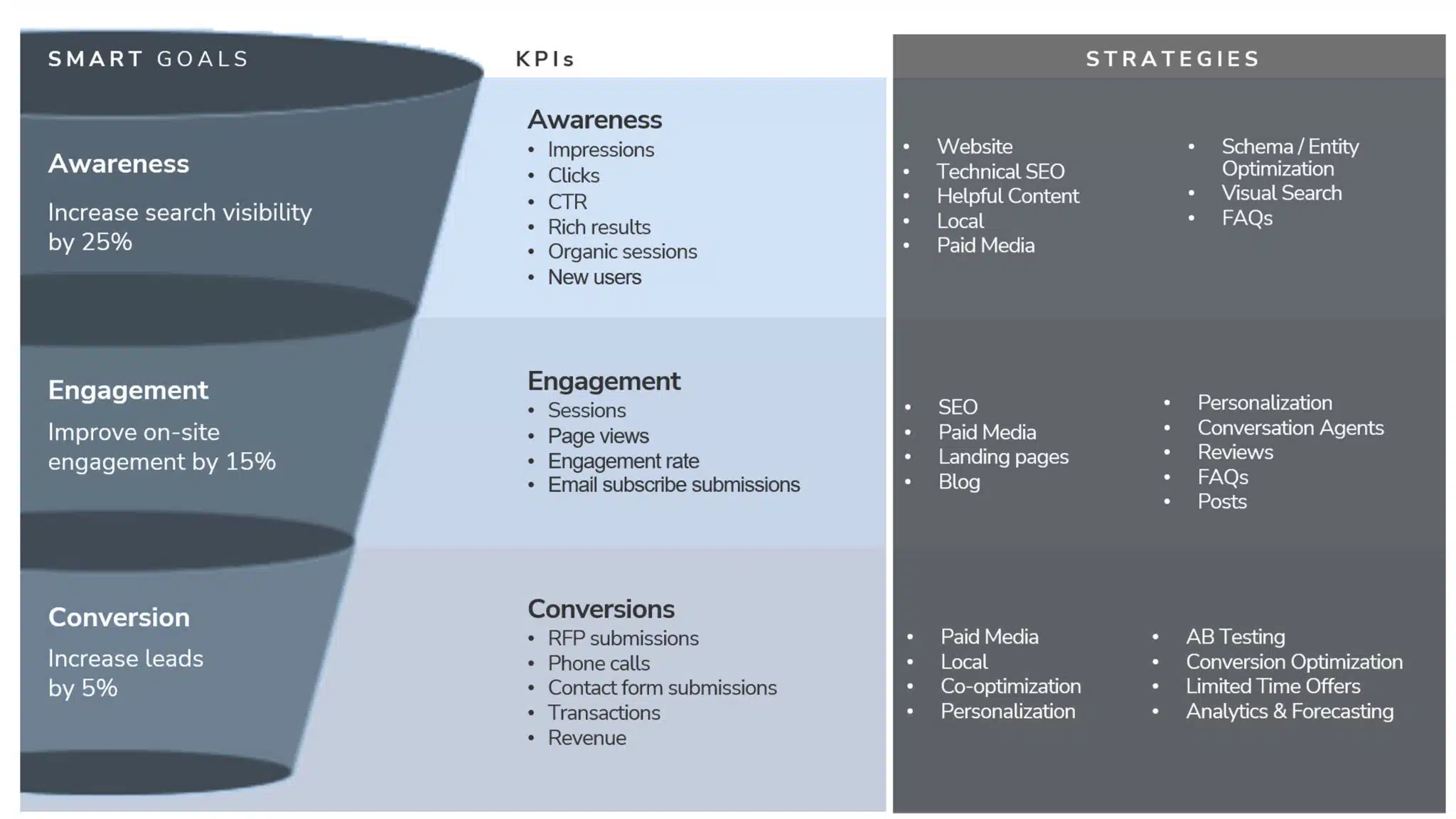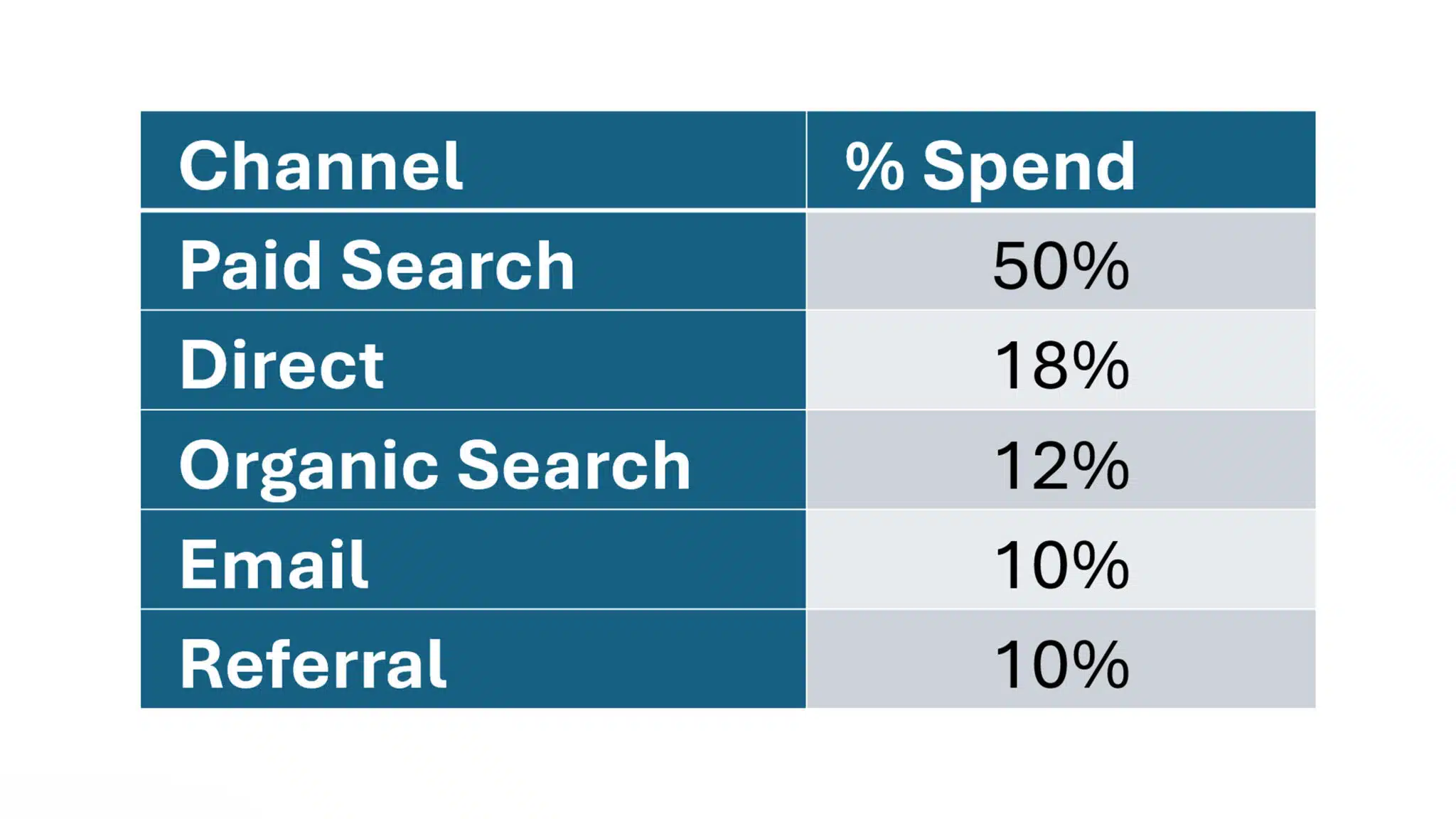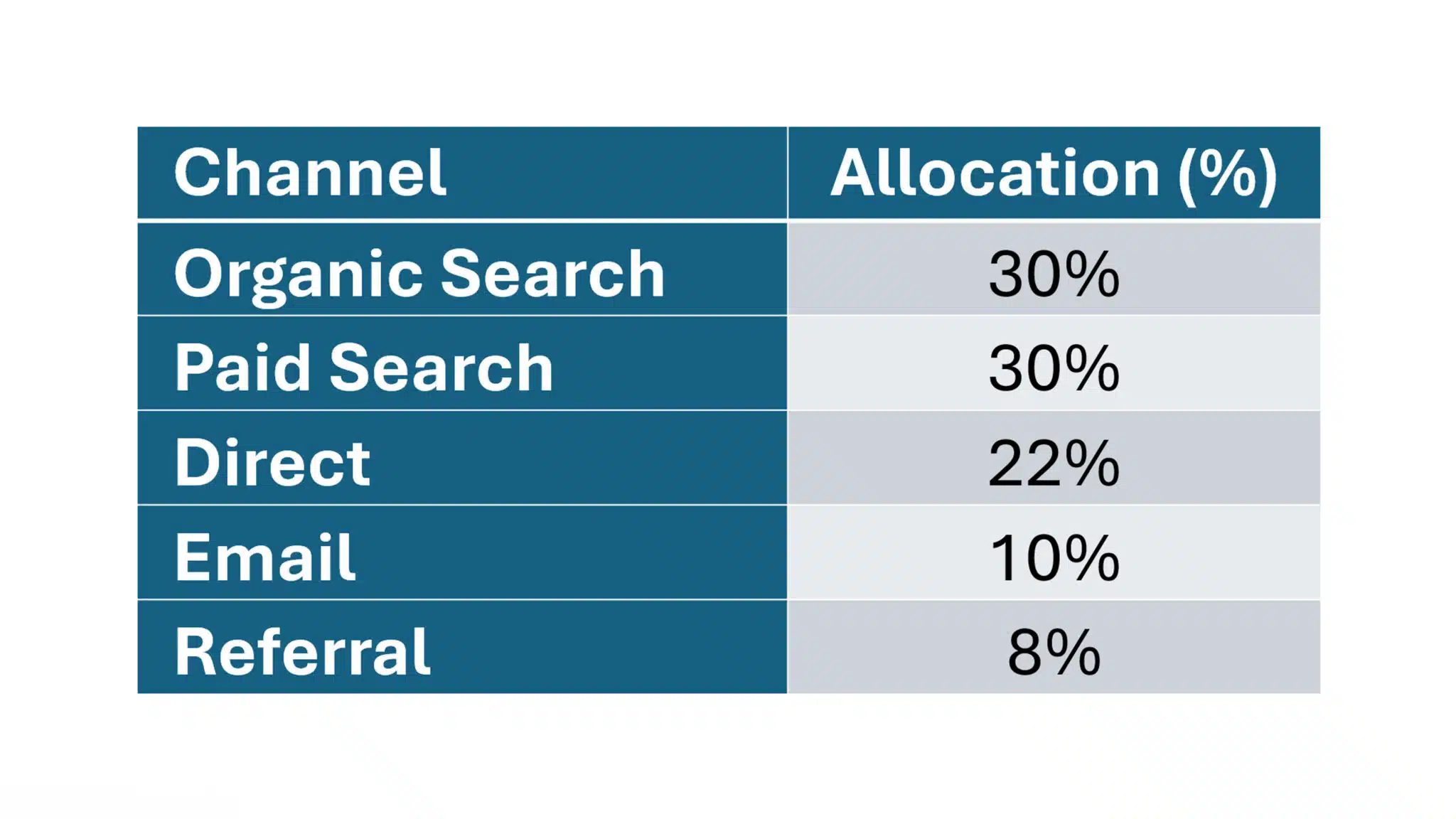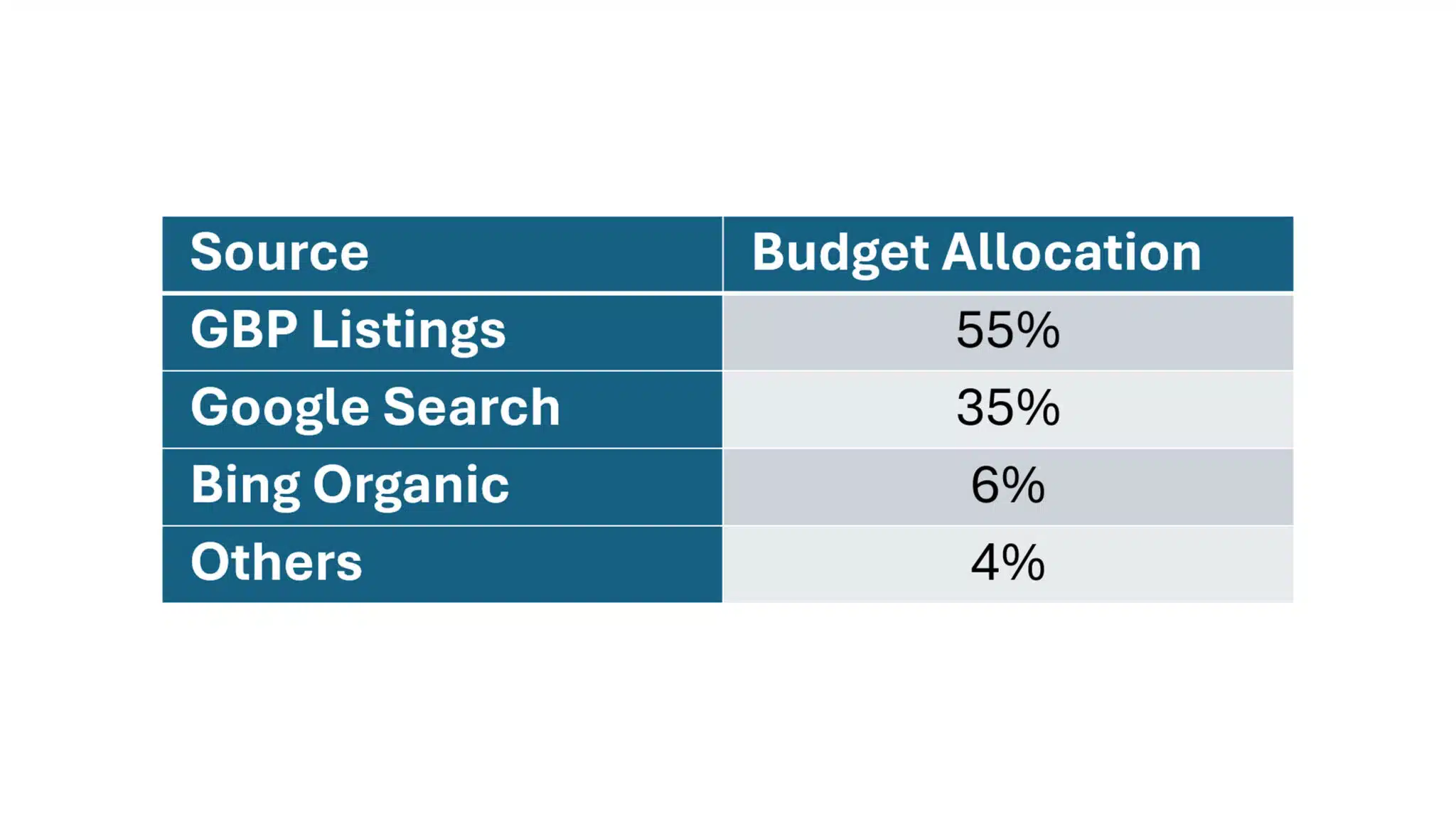AI is transforming the way businesses approach their digital marketing budgeting and forecasting processes.
Businesses can develop robust forecasting and budgeting models focused on data-driven decisions.
This approach enables personalized strategies that align with specific business objectives and can be adjusted based on the organization’s needs and channels.
AI is a key driver of transformation.
- According to a Google Cloud report, up to 86% of organizations implementing generative AI report experiencing revenue growth of 6% or more compared to their company’s total annual revenue.
This article explains how to leverage AI with the right data to prioritize forecasting and budgeting, especially for digital marketing efforts.
Below are six steps to developing a template that fits your business’s unique needs.

Step 1: Define business goals, objectives and KPIs
This step is divided into two parts: defining objectives and identifying key performance indicators (KPIs).
Clearly express business objectives
Specify overall business goals, such as increasing revenue, improving brand awareness, generating leads, or increasing engagement rates.
Identify specific KPIs
Determine relevant KPIs for each targeted channel, such as views, conversion rates, or cost per acquisition (CPA).

After aligning on goals and KPIs, analyze historical trends to identify channels and strategies that can help achieve goals.
Step 2: Trends, customer journeys and channels
Channel Distribution Analysis
- Collect historical data: Collect data on marketing spend, revenue, and KPIs for each channel.
- Identify performance levels: Analyze data to determine which channels are high performers and which are low performers.
- Calculate return on investment: Know the return on investment (ROI) and other relevant metrics for each channel.
Market and trend analysis
- Identify industry and market trends: Examine industry trends, including market demand and supply patterns for the upcoming year and the previous year.
- Evaluate consumer behavior and emerging technologies: Identify changes in consumer behavior and emerging technologies, such as AI, virtual agents and the shift to mobile platforms.
- Analyze competitor activity: Evaluate competitor performance across different channels.
Search trends and the customer journey
- Analyze customer discovery channels: Determine how your customers find your business. While new marketing strategies may seem promising, make sure these channels align with your customer’s journey.
- To use Google Search Console And Google Analytics: Leverage tools like Search Console and Analytics to understand customer search trends and compare them to industry-wide search changes.
- Evaluate content formats: Evaluate whether your business is gaining traction with videos, AI-generated insights, or images and compare those results with industry and competitor benchmarks.
Get the research newsletter marketers rely on.
Step 3: Data and Infrastructure
Evaluate the existing technology stack
- Evaluate technology infrastructure for its ability to centralize data, maintain data quality, and ensure data security.
Centralize data
- Consolidate all data from different channels and touchpoints into a single location, such as a data lake. Test if the data can be used to run analytics and reports.
Data cleaning and preprocessing
- With all the data collected, the next step is to prepare it for forecasting and budgeting models.
- Start by cleaning and organizing data, focusing on the most relevant data points aligned with business goals and KPIs.
- Ensure data accuracy and consistency by removing outliers and correcting any inconsistencies.
- Perform exploratory data analysis to identify patterns and correlations.
Step 4: Forecast
Forecasting is essential to budgeting because it helps manage risks, seize opportunities, optimize resources and make sound investment decisions.
The following machine learning and language-based models can be used to generate these predictions:
ARIMA (Auto Regressive Integrated Moving Average)
- Combines autoregression and moving average.
- Flexible for different time series models.
- SARIMA, or seasonal ARIMA, takes seasonal fluctuations into account.
Prophet
- Developed by Facebook.
- Decomposes time series data into trend, seasonality, and holiday effects.
- Works best with time series with strong seasonal effects and multiple seasons of historical data.
Chronos (language-based model)
- Developed by Amazon.
- A family of pre-trained time series forecasting models based on language model architectures.
- A time series is transformed into a sequence of tokens via scaling and quantization and a language model is trained on these tokens using cross-entropy loss.
- Once trained, probabilistic forecasts are obtained by sampling several future trajectories given the historical context.
Consider using Claude 3.5 Sonnet from Anthropic to easily generate Python code to implement the forecast models.
Step 5: Budgeting
Determining Optimal Channel Allocation
- Determine the best budget allocation method based on business goals, such as percentage of revenue or a fixed amount per channel.
- Consider factors such as channel maturity, potential ROI, and customer and market trends.
- Use statistical techniques such as linear regression to generate a market mix model that optimizes budget allocation across channels to achieve your business objective.
Regular monitoring and optimization
- Continuously track channel performance against budget and KPIs.
- Identify underperforming channels and reallocate budget accordingly.
- Optimize campaigns based on real-time data and insights.
Step 6: Use cases
Finally, create specific use cases for each stage of your marketing plan. For example:
- “As the marketing director of a high-end hotel, I want to increase online revenue by 20% year over year. To help achieve this goal, recommend the best budget allocation across all digital channels.
Solution Steps
Define business objectives and KPIs
- Objective – Increase revenue by 20% in total
- KPI – Revenue
Channel distribution, ROI, revenue and conversions
- Collect historical revenue and conversion data from Google Analytics across all channels.
- Collect spending data for all channels.
- Calculate the ROI for each channel.
Data and infrastructure
- All data should be available in a centralized storage such as a data lake.
- It is easier to access clean, centralized data to train the model.
- Install the required python libraries such as pandas, numpy or scipy.
- Perform exploratory data analysis to identify trends and seasonal patterns by running Python libraries and statistical analyzes
Forecasting and budgeting
- Use forecasting models like SARIMA to forecast revenue for each channel based on expenses. The model will account for seasonality trends in the data
- Use statistical optimization techniques to find the best budget allocation between channels.
Working model output
Current average spend on top channels:

After performing all the steps given above, here is the budgeting model’s recommended allocation:

Assigning individual channels
Once you have the budget allocation for each channel, the next step is to break it down further and identify the specific sources or platforms within each channel.
For example:
- In the organic search channel, you can consider sources like Google Business.
- For paid search, platforms like Google Ads and Facebook.
This helps determine the precise budget needed for each source.
For our use case, focus on the organic search channel. Run the budgeting model for all sources in this channel to determine the allocation for each source.
After completing all the steps, here is the recommended budget allocation for organic search sources:

Strategies and solutions to maximize the complete digital experience
Now, based on the recommended allocation, deploy the strategies to optimize GBP ads and Google search.
AI in Digital Marketing: Smarter Budgeting and Forecasting
In the age of AI, budgeting and forecasting can be done in real-time if data from different customer touchpoints and channels is centralized and easily available throughout the customer journey.
By leveraging AI, you can optimize marketing performance by allocating the right budget to each channel based on its contribution to achieving your business goals.
Contributing authors are invited to create content for Search Engine Land and are chosen for their expertise and contribution to the search community. Our contributors work under editorial supervision and the quality and relevance of the contributions for our readers are checked. The opinions they express are their own.

